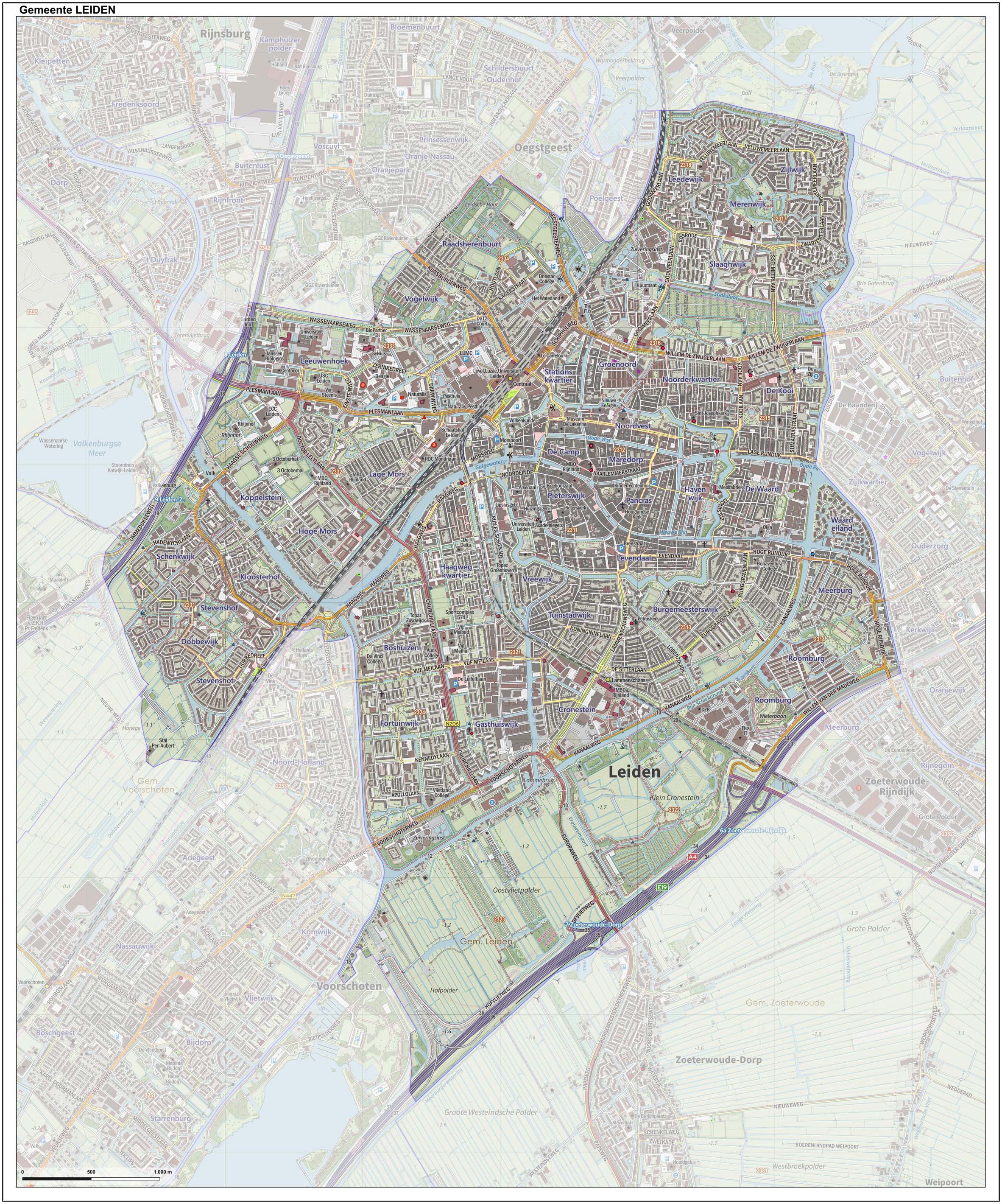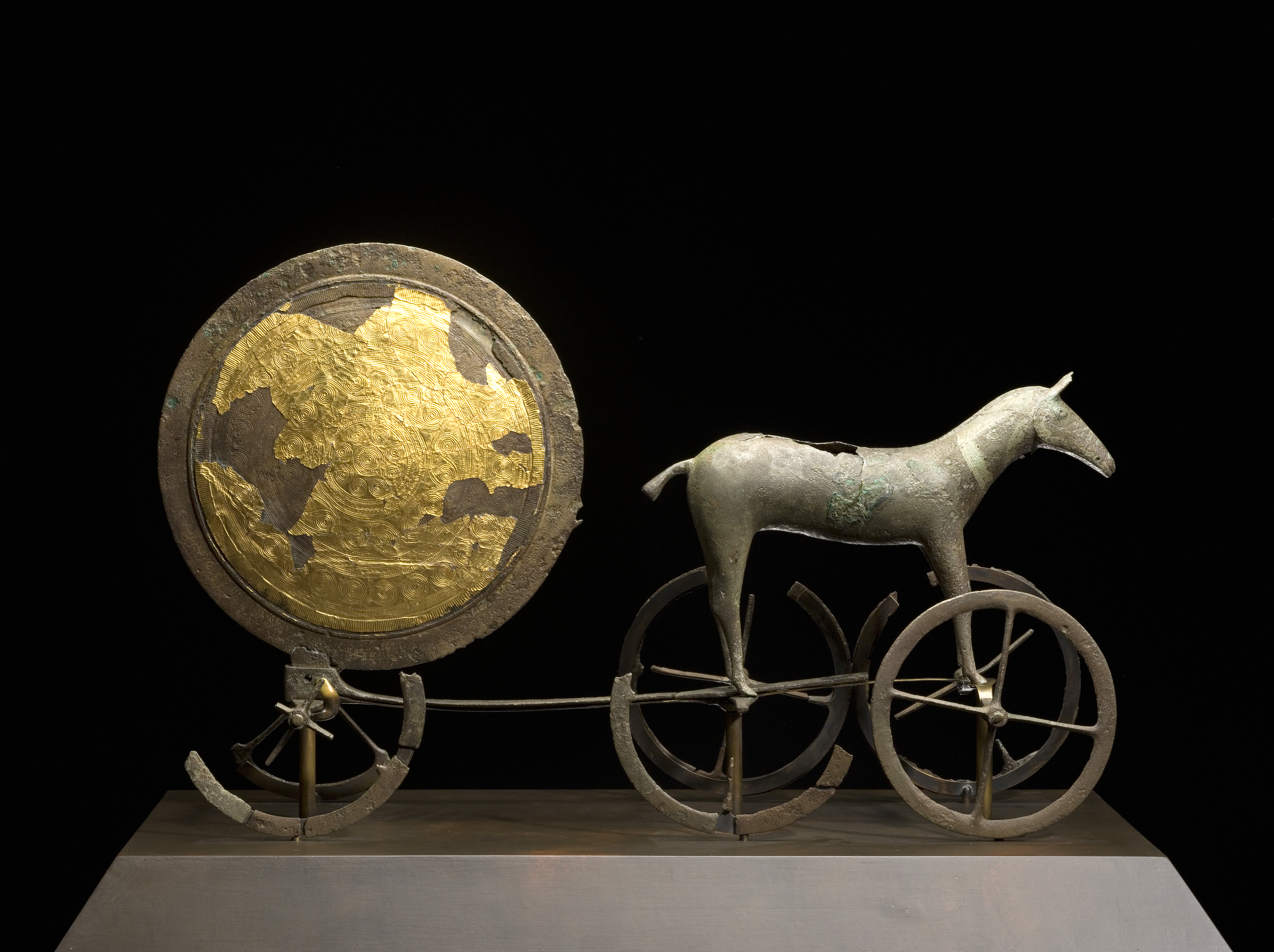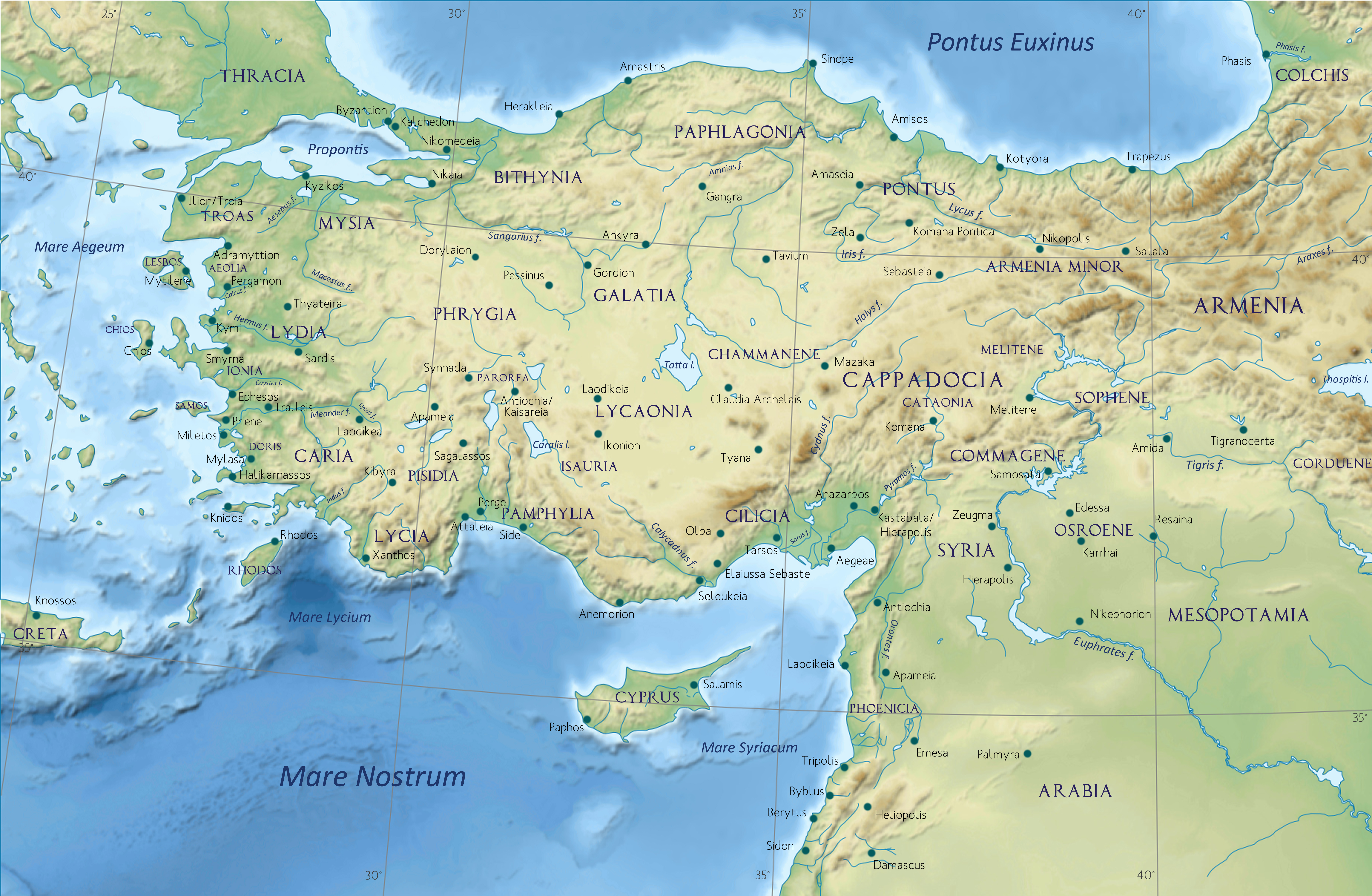|
Mene (goddess)
Mene ( grc, Μήνη, Mḗnē, "moon, month", ), in ancient Greek religion and Greek mythology, is an epithet of Selene, the Greek lunar goddess as a goddess presiding over the months. Etymology The Greek word (''mēnē'') means both the Moon and the lunar month. It represents the feminine form of the older masculine noun (''mēn''), which in turn derives from the oblique stem of the Indo-European word ''*meh1nōt'' ("moon; month").' The name of the Phrygian moon-god Men derives from the same word''.'' Further cognates include "Moon" and "Máni." William Smith writes of Mene as "a goddess presiding over the months".Smith, s.v"Mene"/ref> Apostolos Athanassakis and Benjamin Wolkow speculate that Selene's name, which is derived from the word (''selas,'' "light") and thus means "luminous one", might have originally developed as a euphemism, before becoming the Moon and its goddess's proper name. See also * Proto-Indo-European religion * Proto-Indo-European language * ... [...More Info...] [...Related Items...] OR: [Wikipedia] [Google] [Baidu] |
Ancient Greek Religion
Religious practices in ancient Greece encompassed a collection of beliefs, rituals, and mythology, in the form of both popular public religion and cult practices. The application of the modern concept of "religion" to ancient cultures has been questioned as anachronistic. The ancient Greeks did not have a word for 'religion' in the modern sense. Likewise, no Greek writer known to us classifies either the gods or the cult practices into separate 'religions'. Instead, for example, Herodotus speaks of the Hellenes as having "common shrines of the gods and sacrifices, and the same kinds of customs." Most ancient Greeks recognized the twelve major Olympian gods and goddesses—Zeus, Hera, Poseidon, Demeter, Athena, Ares, Aphrodite, Apollo, Artemis, Hephaestus, Hermes, and either Hestia or Dionysus—although philosophies such as Stoicism and some forms of Platonism used language that seems to assume a single transcendent deity. The worship of these deities, and severa ... [...More Info...] [...Related Items...] OR: [Wikipedia] [Google] [Baidu] |
William Smith (lexicographer)
Sir William Smith (20 May 1813 – 7 October 1893) was an English lexicographer. He became known for his advances in the teaching of Greek and Latin in schools. Early life Smith was born in Enfield in 1813 to Nonconformist parents. He attended the Madras House school of John Allen in Hackney. Originally destined for a theological career, he instead became articled to a solicitor. Meanwhile, he taught himself classics in his spare time, and when he entered University College London carried off both the Greek and Latin prizes. He was entered at Gray's Inn in 1830, but gave up his legal studies for a post at University College School and began to write on classical subjects. Lexicography Smith next turned his attention to lexicography. His first attempt was '' A Dictionary of Greek and Roman Antiquities'', which appeared in 1842, the greater part being written by him. Then followed the ''Dictionary of Greek and Roman Biography and Mythology'' in 1849. A parallel '' Dicti ... [...More Info...] [...Related Items...] OR: [Wikipedia] [Google] [Baidu] |
Károly Kerényi
Károly (Carl, Karl) Kerényi ( hu, Kerényi Károly, ; 19 January 1897 – 14 April 1973) was a Hungarian scholar in classical philology and one of the founders of modern studies of Greek mythology. Life Hungary, 1897–1943 Károly Kerényi was born in Temesvár, Austria-Hungary (now Timișoara, Romania) to Hungarian parents of German origin. His father’s family was of Swabian peasant descent. Kerényi learnt German as a foreign language at school, and later chose it as his language for scientific work. He identified himself with the city of Arad, where he attended secondary school, because of its liberal spirits as the city of the 13 martyrs of the Hungarian Revolution of 1848/49. He moved on to study classical philology at the University of Budapest where he mostly appreciated the teaching of the Latinist Géza Némethy as well as of the Indo-Germanist Josef Schmidt. After graduation, Kerényi travelled extensively in the Mediterranean region and spent time as ... [...More Info...] [...Related Items...] OR: [Wikipedia] [Google] [Baidu] |
Leiden
Leiden (; in English and archaic Dutch also Leyden) is a city and municipality in the province of South Holland, Netherlands. The municipality of Leiden has a population of 119,713, but the city forms one densely connected agglomeration with its suburbs Oegstgeest, Leiderdorp, Voorschoten and Zoeterwoude with 206,647 inhabitants. The Netherlands Central Bureau of Statistics (CBS) further includes Katwijk in the agglomeration which makes the total population of the Leiden urban agglomeration 270,879, and in the larger Leiden urban area also Teylingen, Noordwijk, and Noordwijkerhout are included with in total 348,868 inhabitants. Leiden is located on the Oude Rijn, at a distance of some from The Hague to its south and some from Amsterdam to its north. The recreational area of the Kaag Lakes ( Kagerplassen) lies just to the northeast of Leiden. A university city since 1575, Leiden has been one of Europe's most prominent scientific centres for more than four centuri ... [...More Info...] [...Related Items...] OR: [Wikipedia] [Google] [Baidu] |
H2éwsōs
H, or h, is the eighth letter in the Latin alphabet, used in the modern English alphabet, the alphabets of other western European languages and others worldwide. Its name in English is ''aitch'' (pronounced , plural ''aitches''), or regionally ''haitch'' ."H" ''Oxford English Dictionary,'' 2nd edition (1989); ''Merriam-Webster's Third New International Dictionary of the English Language, Unabridged'' (1993); "aitch" or "haitch", op. cit. History The original Semitic letter Heth most likely represented the voiceless pharyngeal fricative (). The form of the letter probably stood for a fence or posts. The Greek Eta 'Η' in archaic Greek alphabets, before coming to represent a long vowel, , still represented a similar sound, the voiceless glottal fricative . In this context, the letter eta is also known as Heta to underline this fact. Thus, in the Old Italic alphabets, the letter Heta of the Euboean alphabet was adopted with its original sound value . While Etruscan and Lat ... [...More Info...] [...Related Items...] OR: [Wikipedia] [Google] [Baidu] |
Proto-Indo-European Language
Proto-Indo-European (PIE) is the reconstructed common ancestor of the Indo-European language family. Its proposed features have been derived by linguistic reconstruction from documented Indo-European languages. No direct record of Proto-Indo-European exists. Far more work has gone into reconstructing PIE than any other proto-language, and it is the best understood of all proto-languages of its age. The majority of linguistic work during the 19th century was devoted to the reconstruction of PIE or its daughter languages, and many of the modern techniques of linguistic reconstruction (such as the comparative method) were developed as a result. PIE is hypothesized to have been spoken as a single language from 4500 BC to 2500 BC during the Late Neolithic to Early Bronze Age, though estimates vary by more than a thousand years. According to the prevailing Kurgan hypothesis, the original homeland of the Proto-Indo-Europeans may have been in the Pontic–Caspian st ... [...More Info...] [...Related Items...] OR: [Wikipedia] [Google] [Baidu] |
Proto-Indo-European Religion
Proto-Indo-European mythology is the body of myths and deities associated with the Proto-Indo-Europeans, the hypothetical speakers of the reconstructed Proto-Indo-European language. Although the mythological motifs are not directly attested – since Proto-Indo-European speakers lived in preliterate societies – scholars of comparative mythology have reconstructed details from inherited similarities found among Indo-European languages, based on the assumption that parts of the Proto-Indo-Europeans' original belief systems survived in the daughter traditions. The Proto-Indo-European pantheon includes a number of securely reconstructed deities, since they are both cognates – linguistic siblings from a common origin –, and associated with similar attributes and body of myths: such as *''Dyḗws Ph₂tḗr'', the daylight-sky god; his consort *''Dʰéǵʰōm'', the earth mother; his daughter *''H₂éwsōs'', the dawn goddess; his sons the Divine Twins; and ''*Seh� ... [...More Info...] [...Related Items...] OR: [Wikipedia] [Google] [Baidu] |
Apostolos Athanassakis
Apostolos N. Athanassakis ( el, Αποστολος Αθανασάκης) is a classical scholar and formerly Argyropoulos Chair in Hellenic Studies at the University of California, Santa Barbara (UCSB). Professor Athanassakis, or "Professor A" as he is often referred to by students, served as the faculty in residence in Manzanita Village. Athanassakis taught at UCSB for nearly 30 years in the Classics Department. From 1984 to 1986 he served as head of the Humanities Division at the University of Crete, in Greece. Bibliography * '' Apocolocyntosis divi Claudii'' (translation, introduction and commentary, 1973) *''The Homeric Hymns'' (translation, introduction and notes). Baltimore, MD; Johns Hopkins University Press, 1976. * '' Vita Sancti Pachomii'' (translation and introduction, 1977) * ''Hesiod: Theogony, Works and Days and Shield of Heracles'' (translation, introduction and commentary, 1983) * ''Essays on Hesiod, Volume I'' (editor, 1992) * ''Essays on Hesiod, Volume II'' (edit ... [...More Info...] [...Related Items...] OR: [Wikipedia] [Google] [Baidu] |
Máni
Máni ( Old Norse: ; "Moon"Orchard (1997:109).) is the Moon personified in Germanic mythology. Máni, personified, is attested in the '' Poetic Edda'', compiled in the 13th century from earlier traditional sources, and the '' Prose Edda'', written in the 13th century by Snorri Sturluson. Both sources state that he is the brother of the personified sun, Sól, and the son of Mundilfari, while the ''Prose Edda'' adds that he is followed by the children Hjúki and Bil through the heavens. As a proper noun, Máni appears throughout Old Norse literature. Scholars have proposed theories about Máni's potential connection to the Northern European notion of the Man in the Moon, and a potentially otherwise unattested story regarding Máni through skaldic kennings. Attestations ''Poetic Edda'' In the poem '' Völuspá'', a dead völva recounts the history of the universe and foretells the future to the disguised god Odin. In doing so, the völva recounts the early days of the univ ... [...More Info...] [...Related Items...] OR: [Wikipedia] [Google] [Baidu] |
Greek Mythology
A major branch of classical mythology, Greek mythology is the body of myths originally told by the ancient Greeks, and a genre of Ancient Greek folklore. These stories concern the origin and nature of the world, the lives and activities of deities, heroes, and mythological creatures, and the origins and significance of the ancient Greeks' own cult and ritual practices. Modern scholars study the myths to shed light on the religious and political institutions of ancient Greece, and to better understand the nature of myth-making itself. The Greek myths were initially propagated in an oral-poetic tradition most likely by Minoan and Mycenaean singers starting in the 18th century BC; eventually the myths of the heroes of the Trojan War and its aftermath became part of the oral tradition of Homer's epic poems, the '' Iliad'' and the '' Odyssey''. Two poems by Homer's near contemporary Hesiod, the '' Theogony'' and the '' Works and Days'', contain accounts of the genes ... [...More Info...] [...Related Items...] OR: [Wikipedia] [Google] [Baidu] |
Men (god)
''Mēn'' (Greek: "month; Moon", presumably influenced by Avestan ''måŋha'') was a lunar god worshipped in the western interior parts of Anatolia. He is attested in various localized variants, such as ''Mēn Askaenos'' in Antioch in Pisidia, or ''Mēn Pharnakou'' at Ameria in Pontus. Mēn is often found in association with Persianate elements, especially with the goddess Anahita. Lunar symbolism dominates his iconography. The god is usually shown with the horns of a crescent emerging from behind his shoulders, and he is described as the god presiding over the (lunar) months. Strabo describes Mēn as a local god of the Phrygians. Mēn may be influenced by the Zoroastrian lunar divinity ''Mah.'' Mēn Pharnakou In the Kingdom of Pontus, there was a temple estate dedicated to Mēn Pharnakou and Selene at Ameria, near Cabira (Strabo 12.3.31). The temple was probably established by Pharnakes I in the 2nd century BC, apparently in an attempt to counter-balance the influence of the ... [...More Info...] [...Related Items...] OR: [Wikipedia] [Google] [Baidu] |
Phrygia
In classical antiquity, Phrygia ( ; grc, Φρυγία, ''Phrygía'' ) was a kingdom in the west central part of Anatolia, in what is now Asian Turkey, centered on the Sangarios River. After its conquest, it became a region of the great empires of the time. Stories of the heroic age of Greek mythology tell of several legendary Phrygian kings: * Gordias, whose Gordian Knot would later be cut by Alexander the Great * Midas, who turned whatever he touched to gold * Mygdon, who warred with the Amazons According to Homer's ''Iliad'', the Phrygians participated in the Trojan War as close allies of the Trojans, fighting against the Achaeans. Phrygian power reached its peak in the late 8th century BC under another, historical, king Midas, who dominated most of western and central Anatolia and rivaled Assyria and Urartu for power in eastern Anatolia. This later Midas was, however, also the last independent king of Phrygia before Cimmerians sacked the Phrygian capital, ... [...More Info...] [...Related Items...] OR: [Wikipedia] [Google] [Baidu] |








